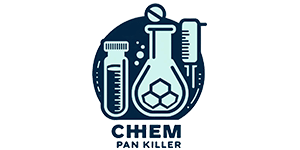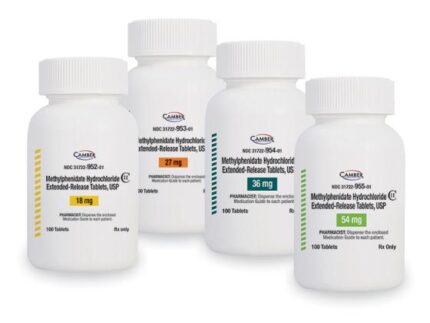Buy PEA Online from Chemicals Pharm Store
_x000D_ _x000D_ _x000D_ _x000D_ _x000D_ Buy PEA Online from chemicals pharm store we supply high quality at low price no prescription needed we ship discretely to any location worldwide 10% discount for all our products and confidential service._x000D_ _x000D_ _x000D_ _x000D_ Phenethylamines refer to a class of substances with documented psychoactive and stimulant effects and include amphetamine, methamphetamine and MDMA, all of which are controlled under the 1971 Convention.[1]The phenethylamines also include ring substituted substances such as the ‘2C series’, ring substituted amphetamines such as the ‘D series’ (e.g.DOI, DOC), benzodifurans (e.g. Bromo-Dragonfly, 2C-B-Fly) and others (e.g. p-methoxymethamphetamine (PMMA))._x000D_
Buy PEA Online / Order PEA Wholesale / Retail Supplies Usage
_x000D_ Seizures of phenethylamines were first reported from the United States and European countries and since 2009 substances such as 2C-E, 2C-I, 4-FA and PMMA have been commonly reported by several countries in different regions. Other phenethylamines increasingly reported to UNODC since 2011 include 4-FMA, 5-APB, 6-APB and 2C-C-NBOMe._x000D_ _x000D_ _x000D_
_x000D_
What is phenylethylamine used for?
_x000D_
_x000D_
_x000D_
_x000D_
_x000D_
_x000D_
Phenylethylamine (PEA) is a hormone-like substance that occurs naturally in your brain and body. It functions as a neurotransmitter that gives you heightened focus, attention, goal-directed behavior, and task-completion.
_x000D_
_x000D_
_x000D_
_x000D_
_x000D_ _x000D_
Buy PEA Online to be used by nervous system stimulant in humans.
_x000D_ A number of studies have reported the synthesis of some phenethylamines and amphetamine substitutes. In the 1980s and 1990s, Alexander Shulgin, a biochemist and pharmacologist, reported the synthesis of numerous new psychoactive compounds.[2]This included the ‘D series’ (e.g. DOC, DOI) and the ‘2C series’ (e.g. 2C-T-7, 2C-T-2) of phenethylamines._x000D_
High Quality PEA Online History .
_x000D_ Simple variations on the mescaline molecule (a natural phenylethylamine) led to the synthesis of powerful hallucinogenic substances, e.g. 4-bromo-2,5-dimethoxyphenethylamine (2C-B), synthesized by Shulgin in 1974. The ‘2C’ series differs from the ‘D’ series only by a slight modification in the chemical structure, and their psychoactive effects have been reported to be dose dependant, ranging from mere stimulant effect at lower doses, with hallucinogenic and entactogenic effects at higher doses.[3]_x000D_ _x000D_ _x000D_ _x000D_ Over two decades later, a new generation of phenethylamines was researched by Professor David Nichols and his research team at Purdue University in the United States. The team found the potency of synthetic analogues of mescaline such as 2C-B and DOB, to exceed that of many naturally occurring hallucinogens.[4] Several substances were synthesized, including a wide range of benzodifuranyl substances, later known as the ‘FLY’.[5] Benzodifurans, such as ‘FLY’ (tetrahydrobenzodifuranyl) and ‘Dragonfly’ (benzodifuranyl aminoalkanes) are potent hallucinogens. Bromo-Dragonfly is the most common and potent substance in this sub-group._x000D_ _x000D_ _x000D_
_x000D_ Other phenethylamines such as PMMA, first synthesized in 1938,[6] are also sold in the drug market as a substitute for ‘ecstasy’. PMMA, in combination with PMA (a substance listed in Schedule I of the 1971 United Nations Convention on Psychotropic Substances), has been frequently found in tablets that carry a similar logo to ‘ecstasy’.[7]_x000D_ _x000D_ _x000D_ _x000D_ Whereas some phenethylamines such as 2C-B, brolamphetamine (DOB), STP/DOM, MDE, 4-MTA, are listed in Schedules I and II of the 1971 Convention, most of the new substances such as the 2C series, the D-Series and ‘others’ such as PMMA are not under international control. Some phenethylamine derivatives are controlled in some countries._x000D_ _x000D_ _x000D_ _x000D_ Street names for some phenethylamines include ‘Europa’ for 2C-E; ‘4-FMP’, ‘para-fluoroamphetamine’, ‘RDJ’ for 4-FA; and ‘4-MMA’, ‘Methyl-MA’ for PMMA. Phenethylamines are usually available in form of pills, but FLY compounds are commonly sold in powder form, while oral doses (on a slip of blotter paper) are usually available for ‘D substances’. Ingestion is the most common route of administration of phenethylamines._x000D_ _x000D_ Most phenethylamines act as either central nervous system stimulants, or as hallucinogens. Stimulants mediate the actions of dopamine, norepinephrine and/or serotonin, mimicking the effects of traditional drugs such as cocaine, amphetamine, methamphetamine, and ecstasy. Classic hallucinogens (psychedelics) mediate specific serotonin-receptor activities and produce hallucinations. Substances in these group mimic the effects of traditional drugs such as 2C-B, LSD and DMT but may also possess residual stimulant activity._x000D_ _x000D_ _x000D_ _x000D_ Reported adverse effects_x000D_ _x000D_ _x000D_ _x000D_ _x000D_
_x000D_
Does PEA get you high?
_x000D_
_x000D_
_x000D_
_x000D_
_x000D_
_x000D_
Taken in doses of 500mg-1.5g per dosage, every few hours, PEA provides the user a feeling of euphoria, energy, stimulation, and overall well being. Esp when combined with the mao-b inhibitor, hordenine, PEA takes on a whole new level of euphoria and overall happiness.
_x000D_
_x000D_
Phenethylamines included in the ‘D series’ are described to be longer lasting, more potent and reportedly more liable to induce vasoconstriction than other members of the phenethylamine family.[8]
_x000D_
_x000D_
_x000D_
_x000D_
_x000D_ _x000D_ _x000D_ Reported adverse effects associated with the use of the ‘D series’ derivatives include agitation, tachycardia, mydriasis, hallucinations, severe limb ischemia, seizures, liver and renal failure.[9]Bromo-Dragonfly has also been associated with a number of deaths in Scandinavia.[10]A case of acute psychosis after ingestion of 2C-T-4 was reported in Japan.[11] Three fatal cases associated with the use of 2C-T-7 have been identified, two of which involved poly-drug use.[12]_x000D_ _x000D_ _x000D_ _x000D_ PMA, PMMA and 4-methylthioamfetamine have been more often associated with incidental deaths than other phenethylamines. PMA and PMMA are known to have a particularly high toxicity but there is no data available on fatalities associated with their use. Clinical observations_x000D_ _x000D_ have reported severe hyperthermia following the use of these substances.[13] Studies in animals have suggested that some metabolites may be exposed to increased toxicity from 4-MTA._x000D_ _x000D_ _x000D_ _x000D_ References_x000D_ _x000D_ [1]Hill, SL., Thomas, S.H., ‘Clinical toxicology of newer recreationaldrugs’, Journal: Clinical Toxicology, 2011, 49(8), 705-19_x000D_ _x000D_ [2]Alexander Shulgin research institute, ‘Alexander ‘Sasha’ Shulgin’ (http://www.shulginresearch.org/home/about/alexander-sasha-shulgin/)_x000D_ _x000D_ [3] Huang, H.H. and Bai, Y.M. ‘Persistent psychosis after ingestion of a single tablet of ‘ 2C-B ’’, Journal: Progress in Neuro-Psychopharmacology & Biological Psychiatryis, 2010, 35 (1), 293-4_x000D_ _x000D_ [4]Monte, A.P., Waldman, S.R.., Marona-Lewicka, D., Wainscott, D.B., Nelson, D.L., Sanders-Bush, E., Nichols, D.E., ‘Dihydrobenzofuran analogues of hallucinogens. 4. Mescaline derivatives’, Journal of Medicinal Chemistry, 1997, 40 (19), 2997–3008_x000D_ _x000D_ [5]Collins, M., ‘Some new psychoactive substances: precursor chemicals and synthesis-driven end-products’, Drug Testing and Analysis, 2011, 3 (7-8), 404-16_x000D_ _x000D_ [6]Glennon, R. A., Ismaiel, A. E. M., Martin, B., Poff, D. and Sutton, M., ‘A preliminary behavioral investigation of PMMA, the 4-methoxy analog of methamphetamine’, Pharmacology Biochemistry and Behavior, 1988, 31 (1), 9-13_x000D_ _x000D_ [7]European Monitoring Centre for Drugs and Drug Addiction, ‘Report on the risk assessment of PMMA in the framework of the joint action on new synthetic drugs’, 2003, 56_x000D_ _x000D_ [8]Hill, S. and Thomas S. H., ‘Clinical toxicology of newer recreational drugs’, Clinical Toxicology, 2011, 49, 705-19_x000D_ _x000D_ [9]King’s College London. Institute of psychiatry, Psychonaut Web Mapping Research Group, ‘Bromo-Dragonfly report’, London UK, 2009, (http://194.83.136.209/documents/reports/Bromodragonfly. pdf; accessed in: September 2012); Wood, D.M., Looker, J.J., Shaikh,_x000D_ _x000D_ [10]Andreasen, M.F., Telving, R., Birkler, R., Schumacher, B. and Johannsen, M., ‘A fatal poisoning involving Bromo-Dragonfly’, Annales de Toxicologie Analitique, 20 (1), 1-55; Personne, M., Hulten, P., ‘Bromo-Dragonfly, a life threatening designer drug’, Journal: Clinical Toxicology, 2008, 46, 379-80_x000D_ _x000D_ [11]Miyajima, M., Matsumoto, T and Ito, S., ‘2C-T-4 intoxication: acute psychosis caused by a designer drug’, Journal: Psychiatry and Clinical Neurosciences, 2008, 62, 243_x000D_ _x000D_ [12]Curtis, B., Kemp, P., Harty, L., Choi, C. and Christensen, D., ‘Postmortem identification and quantitation of 2,5-dimethoxy-4-n-propylthiophenethylamine using GC-MSD and GC-NPD’, Journal of Analytical Toxicology, 2003, 27, 493-98_x000D_ _x000D_ [13]Ling, L.H., Marchant, C., Buckley, N. A., Prior, M., Irvine, R.J., ‘Poisoning with the recreational drug paramethoxyamphetamine (‘ death ’)’, Medical Journal of Australia, 2001, 174, 453-55; De Letter, E.A., Coopman, V.A., Cordonnier, J.A. and Piette, M.H., ‘One fatal and seven non-fatal cases of 4-methylthioamphetamine (4-MTA) intoxication: clinico-pathological findings’, International Journal of Legal Medicine, 2001, 114, 352-56; Elliot, S.P., ‘Fatal poisoning with a new phenethylamine: 4-methylthioamphetamine (4-MTA)’, Journal of Analytical Toxicology, 2000, 24, 85-9; Felgate, H.E., Felgate, P.D., James, R.A., Sims, D.N. and Vozzo, D.C., ‘Recent paramethoxyamphetamine deaths’, Journal of Analytical Toxicology, 1998, 22, 169-72; Lamberth, P.G., Ding, G.K., Nurmi, L.A., ‘Fatal paramethoxy-amphetamine (PMA) poisoning in the Australian Capital Territory’, Medical Journal of Australia, 2008, 188, 426_x000D_ _x000D_














